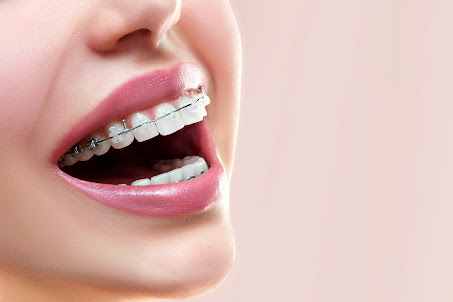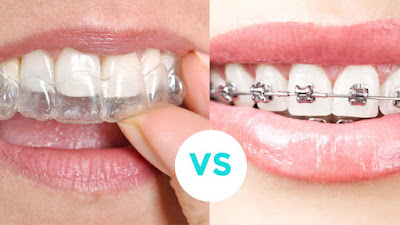Adverse effects of orthodontic treatment – Clear Braces Orthodontics
What is an orthodontic braces?
Orthodontic braces are dental appliances used to straighten and align teeth, improve bite function, and enhance overall oral health. The braces consist of brackets that are attached to the teeth and connected by wires and small rubber bands. The brackets are typically made of metal, ceramic, or a combination of both.
The orthodontist adjusts the tension on the wires at regular intervals to gradually move the teeth into the desired position. The treatment time can vary depending on the severity of the orthodontic issue, but typically lasts between 6 months to 2 years.
Orthodontic braces can correct a variety of issues, including crooked teeth, crowded teeth, gaps between teeth, overbites, underbites, crossbites, and other types of malocclusions.
While orthodontic braces may require some adjustment to daily dental hygiene habits and may cause some discomfort or soreness after each adjustment, the end result of a straighter, healthier smile is often worth it.

Is orthodontics the same as braces?
No, orthodontics is not the same as braces, but braces are one of the many treatments that fall under the umbrella of orthodontics.
Orthodontics is a specialized branch of dentistry that focuses on the diagnosis, prevention, and treatment of dental and facial irregularities. Orthodontic treatment can involve using appliances like braces, clear aligners, headgear, or other devices to correct misaligned teeth and jaws, improve bite function, and enhance overall oral health.
Braces are one of the most common orthodontic treatments used to straighten teeth and improve the alignment of the jaws. Braces consist of brackets, wires, and bands that work together to apply gentle pressure to the teeth and gradually move them into the desired position.
While braces are one of the most well-known and effective orthodontic treatments, there are many other options available to patients, depending on their specific needs and goals. A qualified orthodontist can help determine which treatment is best for you based on a comprehensive evaluation of your oral health and individual needs.

Are braces painful?
It is common to experience some discomfort or soreness after getting braces or having them adjusted, but it is usually manageable and not considered painful.
When braces are first placed, there may be some initial discomfort as the teeth and gums adjust to the pressure of the brackets and wires. This discomfort may last for a few days or up to a week, and over-the-counter pain relievers such as ibuprofen or acetaminophen can help to manage the discomfort.
During routine adjustments, there may be some mild soreness or tenderness as the orthodontist tightens or adjusts the wires and bands. This soreness usually subsides within a few days and can be relieved with over-the-counter pain relievers and eating soft foods.
If the discomfort is severe or persists for an extended period, it is important to contact your orthodontist to ensure that everything is on track and there are no issues that need to be addressed.
How much braces cost in Sydney?
The cost of braces in Sydney can vary depending on a variety of factors, including the type of braces you choose, the severity of your orthodontic issues, and the length of your treatment. Here are some general price ranges for different types of braces in Sydney:
In general, the cost price of orthodontic braces treatment starts from $2,500.00 to up to $8,500.00 depending on the factors below.
It’s important to note that these are general price ranges and the actual cost may vary depending on your specific needs and the orthodontist you choose. Additionally, many orthodontic clinics offer payment plans or financing options to help make treatment more affordable.
CONTACT US: Level 4, 307 Pitt St, Sydney NSW 2000, Australia



Comments
Post a Comment